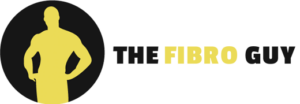- POTS and Exercise: The First Step Everyone Misses - 27 June 2025
- The Missing Link Between Breathlessness, Fatigue, and Chronic Pain: Understanding CO₂ Tolerance - 19 June 2025
- What is Mast Cell Activation Syndrome? - 12 May 2025
We often get asked about Fibromyalgia and Osteoarthritis from our clients, because more often than not, they have been told numerous scary stories by consultants. Likewise, many of the people we speak to have read many articles online, that are laden with misinformation. Osteoarthritis as a whole, gest a bit of a bad reputation, despite being completely normal and inevitable.
In fact, even the name Osteoarthritis is somewhat of a misnomer, as “Osteo” means bone,”‘Arth” means joint, and “Itis” means inflammation. And when we realise that Osteoarthritis is a degenerative condition, not an inflammatory one, we can start to see why there is likely so much misinformation around fibromyalgia and osteoarthritis, especially considering it’s not even named correctly!
For those of you reading, we can appreciate that having more labels attached to you can be a scary thing. A lot of the time people have only just gotten used to and accepted the Fibromyalgia label, before being hit with another in the form of osteoarthritis. Unfortunately, for most people, a quick google of Fibromyalgia and Osteoarthritis brings up many horror stories and a tonne of misinformation. This misinformation has the potential to not only make your pain worse, but ultimately make your world smaller and smaller as you inevitably try to protect yourself more and more over time.
So, in the following article let’s take a look at a few things that we should know about when it comes to Fibromyalgia and Osteoarthritis.
This article covers:
ToggleWhat is Osteoarthritis?
Osteoarthritis is defined as “Degeneration of the joint cartilage and underlying bones, usually accompanied by pain and stiffness, and most commonly found in the hips, knees and thumb joints.”
In a healthy joint, a coating of tough but smooth called cartilage covers and protects the surface of the bones, helping them to move freely against each other. However, when a joint develops osteoarthritis, part of the cartilage thins and the surface becomes rougher. This means the joint doesn’t move as smoothly as it should, causing the protective cartilage on the ends of your bones breaks down, potentially causing pain, swelling and problems moving the joint. When cartilage becomes worn or damaged, all the tissues within the joint become more active than normal, as the body tries to repair the damage. This can result in swelling and inflammation of the joint.
As we mentioned earlier, Osteoarthritis isn’t really properly named, because whilst there can be inflammation present, it’s the degeneration that defines it. After all. we already have a name for inflammatory arthritis which we call Rheumatoid arthritis.
There is a good chance you are reading this because you have Fibromyalgia and Osteoarthritis, and you want to know if they will affect one another. Well, having fibromyalgia does change a few things when it comes to osteoarthritis, but it’s mainly not anything to do with the actual tissues, and don’t worry, we will cover these other factors in this article. But, before we get into how Fibromyalgia may affect osteoarthritis, let’s start with a question that’s a little easier to answer for: why do we get Osteoarthritis in the first place?
Why do we get Osteoarthritis?
As we age our bodies incur wear and tear from just being alive. Our hair grows thin and turns grey, our skin thins, and we developed wrinkles. It is essentially just part of the human condition, and just as we degenerate on the outside of our bodies, we also degenerate on the inside.
Ask yourself this question: Do wrinkles hurt?”
No, they don’t, well not physically anyway. Anti-wrinkle cream is a multi-million-pound industry, so it’s evident that wrinkles do cause some emotional distress for the majority of us!
So then, if degeneration on the outside of the body doesn’t cause us any pain, then why would degeneration on the inside cause it?
Keep in mind also, that we are way more sensitive to changes on the outside of the body than we are on the inside. There are a great many people right now, with very severe degeneration, who have absolutely no pain. Likewise, there are also people with very little osteoarthritis, who are in a great deal of pain. Before we get into the complexities that is Fibromyalgia and Osteoarthritis, it’s important to remember that this wear and tear is a normal part of ageing. In fact, in the next section, let’s take a look at a few studies that show us that normal wear and tear can actually be painless or not correlate to damage.
Some people have pain, whilst others don’t
As we mentioned before, there is a lot of misinformation around Osteoarthritis, and probably even more around Fibromyalgia. So, let’s take a look at some studies and start to break down those damaging narratives that you have likely been told or have read.
One study focusing on professional football players found that 92% of football players had at least 1 spinal degenerative condition, but in some cases, more than 6 were found. The interesting thing was that none of them reported any pain. This is a nice study that helps us look at the complexities of pain, as when it comes to chronic pain it isn’t always about the tissue.
There is a ridiculous amount of evidence that shows us that pain is not tightly linked to tissue damage. And when it comes to Osteoarthritis, there should also be evidence of people with severe degeneration shown on a scan, but who feel fine, and vice versa. This study of 113 people found exactly that, a huge disconnect between degeneration and pain. In which they found that the people with less degeneration had more pain, and those with more degeneration had less pain!
It kind of changes your opinion on some of the stuff you have been told doesn’t it.
Another study looking at the general population, wherein the focus was on the difference between structural changes in the knees and symptoms, found that there isn’t a great connection between the severity of the condition and pain. However, they did find that the symptomatic group had a slower walking speed, longer stride and standing times and reduced strength. Which, when you think about it, makes complete sense. If you are in pain it’s unlikely that you’re going to be moving quickly, but rather taking your time in an effort to not increase pain levels.
That was the only real difference that this study found between those with Osteoarthritis who had pain and those with it who had no pain. Keep in mind also, that another study found that cartilage defects were found in around 11% of those under the age of 40 who had no pain. This percentage jumped to 43% for those over the age of 40, but still without pain. As you can start to see, that actual amount of degeneration doesn’t really correlate with the amount of pain you would expect someone to have.
In this study, it wasn’t just the cartilage they focused on, but also tissue. There were instances of meniscal tears in up to 19% of the study, bone marrow lesions and even bone spurs were present in 12-24%. I think a good place to end this section is to look at a study from 20 years ago, that will really challenge your beliefs about osteoarthritis and pain.
This study showed that people who received a fake arthroscopic knee surgery for Osteoarthritis had results just as good as people who received the real surgery. And in 2008, the New England Journal of Medicine added more experimental evidence to the pile, reporting that “surgery for osteoarthritis of the knee provides no additional benefit to optimized physical and medical therapy.”
In the years to follow, there has been an exceptional level of evidence showing that arthroscopic debridement has no benefit, showing that it is no better than a placebo.
Where does the pain of Osteoarthritis come from then?
We have established that the amount of Osteoarthritis doesn’t really correlate with the amount of pain a person experiences. So what is going on then if it’s not about the actual degeneration? Well, this is where Fibromyalgia can start to make things a little bit more complicated.
When we look at the pain and symptom severity of Osteoarthritis, historically, cartilage damage was believed to be the hallmark of Osteoarthritis. However, since cartilage is an avascular, aneural tissue, the mechanisms of pain are likely to be way more complex than first thought, and most likely influenced by non-cartilaginous structures in the joint including the synovium. The current body of evidence points to pain sensitization, and molecular pathways, as the possible main driver of Osteoarthritis pain.
Like we said before, when it comes to chronic pain, it’s not always about the tissue. We know chronic pain changes the brain and nervous system, causing the brain to take note of inputs that it really shouldn’t be. Hence why so many with conditions like Fibromyalgia often developed other conditions such as allodynia.
Can you have Fibromyalgia and Osteoarthritis?
The Simple answer is yes, it is more common than you think, in fact when you are going through all the tests to get your Fibromyalgia diagnosed, you’ll most likely be told about degeneration somewhere in the body.
Both diagnoses have overlapping symptoms such as pain, stiffness, and limited range of motion. It’s also not just Osteoarthritis and Fibromyalgia, but other rheumatic conditions. One study showed that between 20-30% of those diagnosed with Fibromyalgia, also had co-morbid rheumatic conditions. When we look at the data for just Osteoarthritis, we find that between 10% – 17% of those living with Fibromyalgia also have Osteoarthritis
Does Fibromyalgia make Osteoarthritis worse?
As we mentioned earlier, Fibromyalgia does indeed have the potential to complicate Osteoarthritis.
Those with Fibromyalgia suffer from abnormalities in the way that the brain deals with pain. Supraspinal processes have a top-down enhancing effect on nociceptive processing in the brain and spinal cord. Studies have begun to suggest that such influences occur in conditions such as fibromyalgia. This means that those who do have Fibromyalgia may be far more sensitive to noxious stimuli compared to the general population. Factoring in changes at the joint, those with Fibromyalgia may be more prone to reacting to these changes byways of producing pain.
There have been a few studies that have looked into how Fibromyalgia may affect Osteoarthritis. One such study published in the European Journal of Neuroscience, measured brainwaves in response to short painful laser pulses on the skin of patients suffering from osteoarthritic and fibromyalgia pain, as well as test subjects who had no underlying pain. Scientists discovered that the insula cortex part of the brain increased its activity when expecting a painful pulse, as it predicts the extent and intensity of the patients’ own chronic pain.
It is important to keep in mind, that increased activity in this brain area has been linked to a number of phenomena, including body perception and emotional processing, which might explain the greater pain perception in some patients.
In essence, there are a lot of factors that come with fibromyalgia that can make osteoarthritis worse, when compared to individuals without it. One such factor is sleep disturbances. It is well documented that with sleep disturbances and lack of sleep, comes an increase in pain. For those with Fibromyalgia, getting a good, restful night’s sleep can be somewhat of a challenge due to pain. Meaning that it has the potential to create a breeding ground for worsening the symptoms of not just fibromyalgia pain, but also the pain of Osteoarthritis.
With chronic pain, also comes the prevalence of mental health issues, which can also make symptoms worse. It is well established that mental health issues can be a large driving force behind chronic pain. And for those with Fibromyalgia, they may be more prone to experiencing pain with Osteoarthritis, whereas those without fibromyalgia may likely not even notice these degenerative changes.
What treatments help Fibromyalgia and Osteoarthritis?
We have taken a look at what Osteoarthritis is, how it’s caused, and how Fibromyalgia may affect it. All that is left now is to look at some of the things that can help you when it comes to Fibromyalgia and Osteoarthritis.
Massage
It has been shown that massage can be particularly effective at lowering pain in osteoarthritis and Fibromyalgia. An analysis of 9 studies found that massage helped to improve pain, anxiety, and depression associated with Fibromyalgia.
Gentle aerobic exercise
This has shown benefits for Fibromyalgia and osteoarthritis. And both studies showed a reduction in pain.
Stay hydrated
It is estimated that around 70% of your cartilage is made up of water, and when we are dehydrated this is going to affect the joints, as the more lubricated a joint is, the less friction there will be. This is important when we remember the studies into those with Fibromyalgia being more sensitive to noxious stimuli. We want to reduce the amount of noxious stimulus coming into the nervous system.
Cold showers
The benefits of cold showing with Fibromyalgia can be found in a comprehensive blog post we wrote, which you can find here. The benefits of cold showering with Osteoarthritis can help by reducing pain, decreasing swelling, and constricting blood vessels.
We hope the above has helped to answer the questions you have about Fibromyalgia and Osteoarthritis, and we wish you the best of luck on your journey.
Until next time friends.
—The Fibro Guy Team—
Looking for more articles on Fibromyalgia?
Read our article on Fibromyalgia And Costochondritis
References:
Bedson, J. & Croft, P.R. (2008) ‘The discordance between clinical and radiographic knee osteoarthritis: a systematic search and summary of the literature’, BMC Musculoskeletal Disorders, 9, 116.
Busch, A.J., Webber, S.C., Richards, R.S., Bidonde, J., Schachter, C.L., Schafer, L.A., Danyliw, A., Sawant, A., Dal Bello-Haas, V. & Rader, T. (2011) ‘Resistance exercise training for fibromyalgia’, Cochrane Database of Systematic Reviews, (12), CD010884.
Finan, P.H., Goodin, B.R. & Smith, M.T. (2013) ‘The association of sleep and pain: an update and a path forward’, Journal of Pain, 14(12), pp. 1539–1552.
Gracely, R.H., Petzke, F., Wolf, J.M. & Clauw, D.J. (2002) ‘Functional magnetic resonance imaging evidence of augmented pain processing in fibromyalgia’, Arthritis & Rheumatism, 46(5), pp. 1333–1343.
Guermazi, A., Niu, J., Hayashi, D., Roemer, F.W., Englund, M., Neogi, T., et al. (2012) ‘Prevalence of abnormalities in knees detected by MRI in adults without knee osteoarthritis: population based observational study (Framingham Osteoarthritis Study)’, BMJ, 345, e5339.
Gwilym, S.E., Keltner, J.R., Warnaby, C.E., Carr, A.J., Chizh, B., Chessell, I.P., et al. (2009) ‘Psychophysical and functional imaging evidence supporting the presence of central sensitization in a cohort of osteoarthritis patients’, Arthritis & Rheumatism, 61(9), pp. 1226–1234.
Hunter, D.J. & Bierma-Zeinstra, S. (2019) ‘Osteoarthritis’, The Lancet, 393(10182), pp. 1745–1759.
Kirkley, A., Birmingham, T.B., Litchfield, R.B., Giffin, J.R., Willits, K.R., Wong, C.J., et al. (2008) ‘A randomized trial of arthroscopic surgery for osteoarthritis of the knee’, New England Journal of Medicine, 359(11), pp. 1097–1107.
Moseley, J.B., O’Malley, K., Petersen, N.J., Menke, T.J., Brody, B.A., Kuykendall, D.H., et al. (2002) ‘A controlled trial of arthroscopic surgery for osteoarthritis of the knee’, New England Journal of Medicine, 347(2), pp. 81–88.
Perlman, A.I., Sabina, A., Williams, A.L., Njike, V.Y. & Katz, D.L. (2006) ‘Massage therapy for osteoarthritis of the knee: a randomized controlled trial’, Archives of Internal Medicine, 166(22), pp. 2533–2538.
Salaffi, F., De Angelis, R. & Grassi, W. (2007) ‘Fibromyalgia in patients with chronic low back pain: prevalence and impact on the quality of life’, Clinical and Experimental Rheumatology, 25(5), pp. 708–713.





